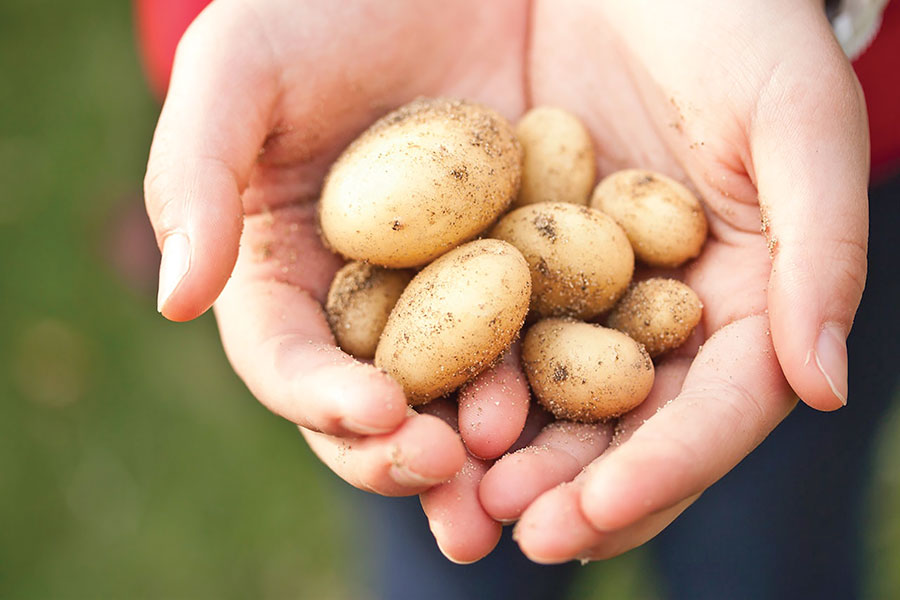CENTRE WELLINGTON – There is nothing nicer than heading out into the garden about an hour before the planned supper hour and digging up a batch of potatoes.
As an added bonus, it is the type of activity in which small children participate willingly and find extremely intriguing.
Potatoes are members of the nightshade family, Solanaceae, which also includes tomato, eggplant, pepper, petunia and tobacco.
This botanical family contains valuable food crops and, ironically, also contains plants which are highly toxic to humans, such as deadly nightshade.
Potatoes are native to the mountainous regions of South America and were introduced to Europe in the 1500s. Potatoes are now cultivated all over the world and have become a food staple.
They are grown as an annual but can be considered a perennial since they will re-grow from the tubers produced on the underground stems.
Potatoes which were missed in the summer dig will sprout the following year and it is a common occurrence to have potato plants growing out of the compost pile as a result of discarded peelings or old potatoes.
Seed potatoes are simply potato tubers which have been grown and certified to be true to type and disease free.
For your vegetable garden, it is important to use certified seed potatoes rather than planting potatoes you buy at the grocery store since store-bought table potatoes have generally been treated with a sprout inhibitor and will not sprout freely.
Tubers have all of the characteristics of normal stems including dormant buds, called eyes.
When planting potatoes, you may plant whole small potatoes or cut them into pieces about the size of an egg. There should be one or two eyes on each piece. One of the eyes, or buds, will dominate and become the new potato plant.
Potatoes can grow in a wide range of soil conditions but prefer a light, well-drained, loamy and slightly acidic soil.
They are heavy feeders so the soil should be deeply worked with a liberal amount of added compost and organic matter.
For the best success, potatoes should not be grown in the same location two years in a row.
Alternating with nitrogen-fixing legumes, such as peas or beans, will re-introduce nutrients which were used up in potato production. Also, Colorado potato beetles, with their knack of locating their food source and moving in, will tend to invade the second year’s crop in the same place.
Potatoes are considered a semi-hardy vegetable and can be planted about three to five weeks before the frost-free date. The soil temperature should be above 6 degrees Celcius or the seed pieces may decay. To reduce seed decay, plant the seed pieces a day after they are cut so that they dry out a little bit and toughen up.
Prepare the soil where you plan to grow potatoes the previous fall. This way, the compost or manure has time to decay and work into the soil.
Too much nitrogen, from fresh or poorly decomposed manure, will tend to promote too much top growth at the expense of tuber development. Lime should not be used on potatoes because it will activate organisms which cause potato diseases.
Plant potatoes three to four inches deep, in trenches, and space the rows two to three feet apart.
Place the seed pieces 15 to 18 inches apart and cover with two to three inches of soil.
Sprouts will emerge in about two weeks.
Continue to cover with more soil as the plants grow but do not bury all of the foliage. Use the soil between the rows to make “hills.”
Hilling is necessary because tubers develop above the eye and exposure of the tubers to light will cause greening.
Hilling should be done every two weeks until about early July. At this point the hills will be large enough to house and protect the developing tubers.
Fertilize with a high phosphorous fertilizer, such as 5-10-5, at the rate of one pound per 50 feet of row about one month after planting. The fertilizer can be sprinkled in between the rows and will be worked into the soil surrounding the plant during the “hilling” process.
A 10-foot row will produce about 20 pounds of potatoes and will require about one pound of seed potatoes. The potatoes can be harvested from within the hills when the foliage starts to die.



